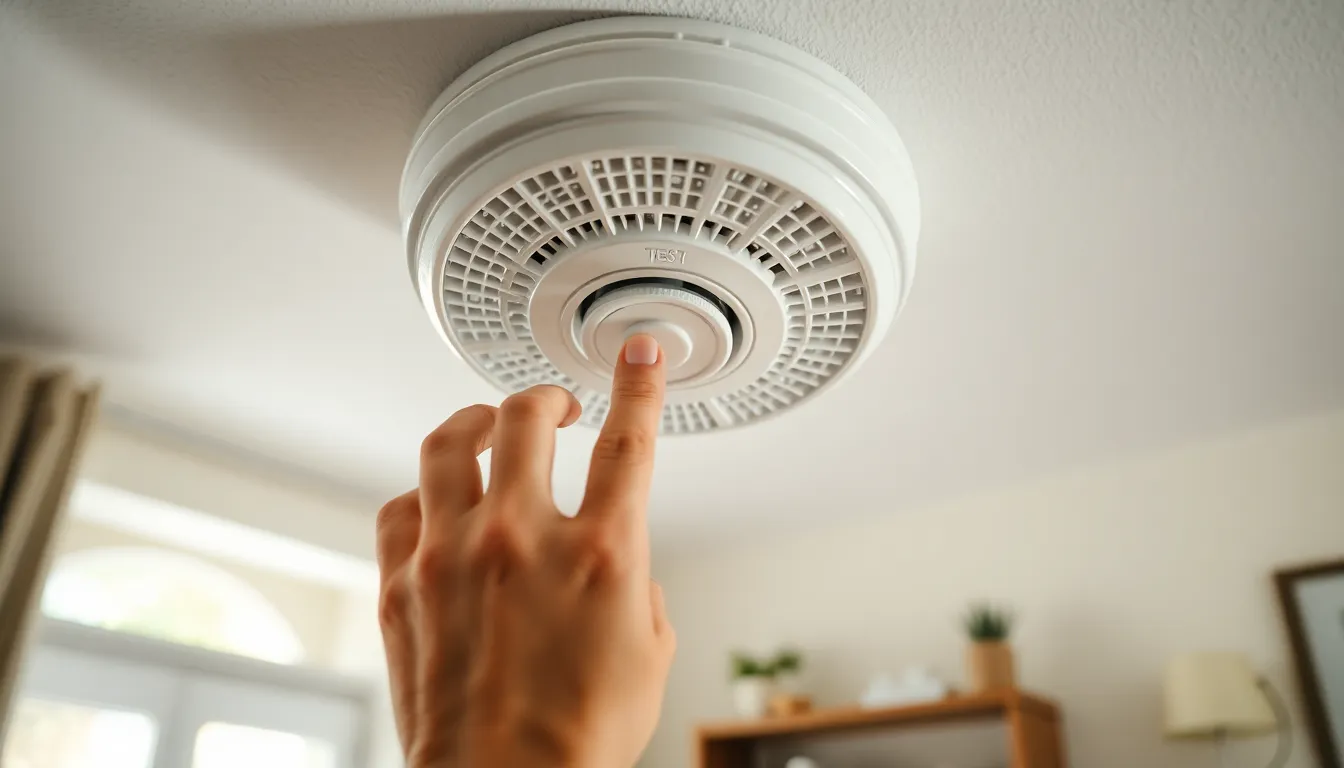Smoke detectors are essential safety devices that can save lives by alerting occupants to the presence of smoke or fire. However, many people overlook the importance of regular maintenance, which can significantly impact their effectiveness. A well-maintained smoke detector increases the chances of early detection, providing crucial time to escape in an emergency.
Neglecting smoke detector upkeep can lead to false alarms or, worse, failure to activate when needed. Understanding the simple yet vital steps for maintenance can ensure these devices function properly. From testing alarms to replacing batteries, staying proactive can make all the difference in fire safety at home.
Table of Contents
ToggleImportance Of Smoke Detector Maintenance
Smoke detector maintenance plays a vital role in fire safety. Regular maintenance ensures devices function properly, increasing the likelihood of detecting smoke or fire in time. Routine testing of alarms can significantly reduce the risk of false alarms, which may cause unnecessary panic or lead to complacency in dangerous situations.
Replacing batteries at least once a year boosts reliability. When batteries are low, detectors may fail to activate, jeopardizing safety. Ensuring smoke detectors are clean and free from dust or debris improves sensor accuracy, helping them to respond promptly.
According to the National Fire Protection Association (NFPA), nearly 50% of smoke alarm failures occur due to dead or missing batteries. This statistic underscores the necessity of proactive measures. Following recommended maintenance schedules can maximize performance and effectiveness in emergencies.
In rental properties, landlords are responsible for maintaining smoke detectors. Tenants should report any malfunctioning devices promptly, ensuring compliance with safety regulations. Regular inspections, including testing alarms and verifying battery status, contribute to a safer living environment for all.
Types Of Smoke Detectors

Smoke detectors come in various types, each designed for specific applications and detection methods. Understanding these types enhances safety measures in any environment.
Ionization Smoke Detectors
Ionization smoke detectors contain a small amount of radioactive material that ionizes the air in the sensing chamber. This creates an electrical current, which triggers the alarm when smoke disrupts the flow of ions. They respond quickly to flaming fires, making them effective for detecting fast-burning fires fueled by combustible materials.
Photoelectric Smoke Detectors
Photoelectric smoke detectors use a light source and a light-sensitive sensor. When smoke enters the detection chamber, it scatters the light, signaling the detector to sound the alarm. These detectors excel at sensing smoldering fires, which often produce more smoke than flames initially. This characteristic makes them a suitable choice for areas prone to slow-burning fires, such as kitchens or living rooms.
Using a combination of both ionization and photoelectric detectors can provide comprehensive coverage against different fire types.
Routine Maintenance Tasks
Routine maintenance tasks ensure smoke detectors function optimally and provide maximum safety. Regular testing and cleaning help prevent malfunctions and enhance fire detection capabilities.
Testing Your Smoke Detector
Testing a smoke detector at least once a month ensures it operates correctly. Press the test button until an alarm sounds; if there’s no sound, replace the batteries or the device itself. Different models may have specific testing protocols, so reviewing the manufacturer’s instructions proves beneficial. According to the NFPA, about 25% of smoke alarms fail to operate due to improper maintenance. For enhanced safety, homeowners should replace smoke detectors every 10 years, regardless of battery condition, to ensure optimal detection functionality.
Cleaning Your Smoke Detector
Cleaning a smoke detector can prevent dust and debris from interfering with its performance. Use a vacuum attachment or a soft brush to gently remove particles from the exterior. Cleaning should occur at least twice a year alongside battery replacement. Additionally, inspect for signs of damage, such as corrosion or cracks, which may necessitate a full replacement. Keeping smoke detectors clean enhances their ability to detect smoke and reduces the risk of false alarms.
Replacement Guidelines
Regular replacement of batteries and the entire smoke detector unit is vital for optimal functionality and safety.
When To Replace Batteries
Batteries in smoke detectors require replacement at least once a year. This guideline ensures that the detectors operate effectively. Homeowners should consider replacing the batteries immediately if the detector emits a chirping sound, indicating low battery power. In addition, during daylight saving time changes, replacing batteries serves as a good reminder for maintenance.
When To Replace The Entire Unit
Smoke detectors should be replaced every 10 years. This time frame applies to both battery-operated and hardwired units. After a decade, detectors may become less sensitive, leading to a higher risk of malfunction. Homeowners can mark the installation date on the detector to track replacement times accurately. Additionally, any smoke detector showing signs of physical damage or excessive dust accumulation should be replaced immediately, regardless of its age.
Regular smoke detector maintenance is non-negotiable for ensuring safety at home. By committing to routine testing and timely battery replacements homeowners can significantly enhance their fire detection capabilities. This proactive approach not only minimizes the risk of false alarms but also ensures that detectors function effectively when needed most.
Understanding the different types of smoke detectors and their specific applications further empowers individuals to make informed choices about their fire safety measures. Regular inspections and timely replacements contribute to a safer living environment. Ultimately prioritizing smoke detector maintenance is a straightforward yet critical step in protecting lives and property from the devastating effects of fire.







